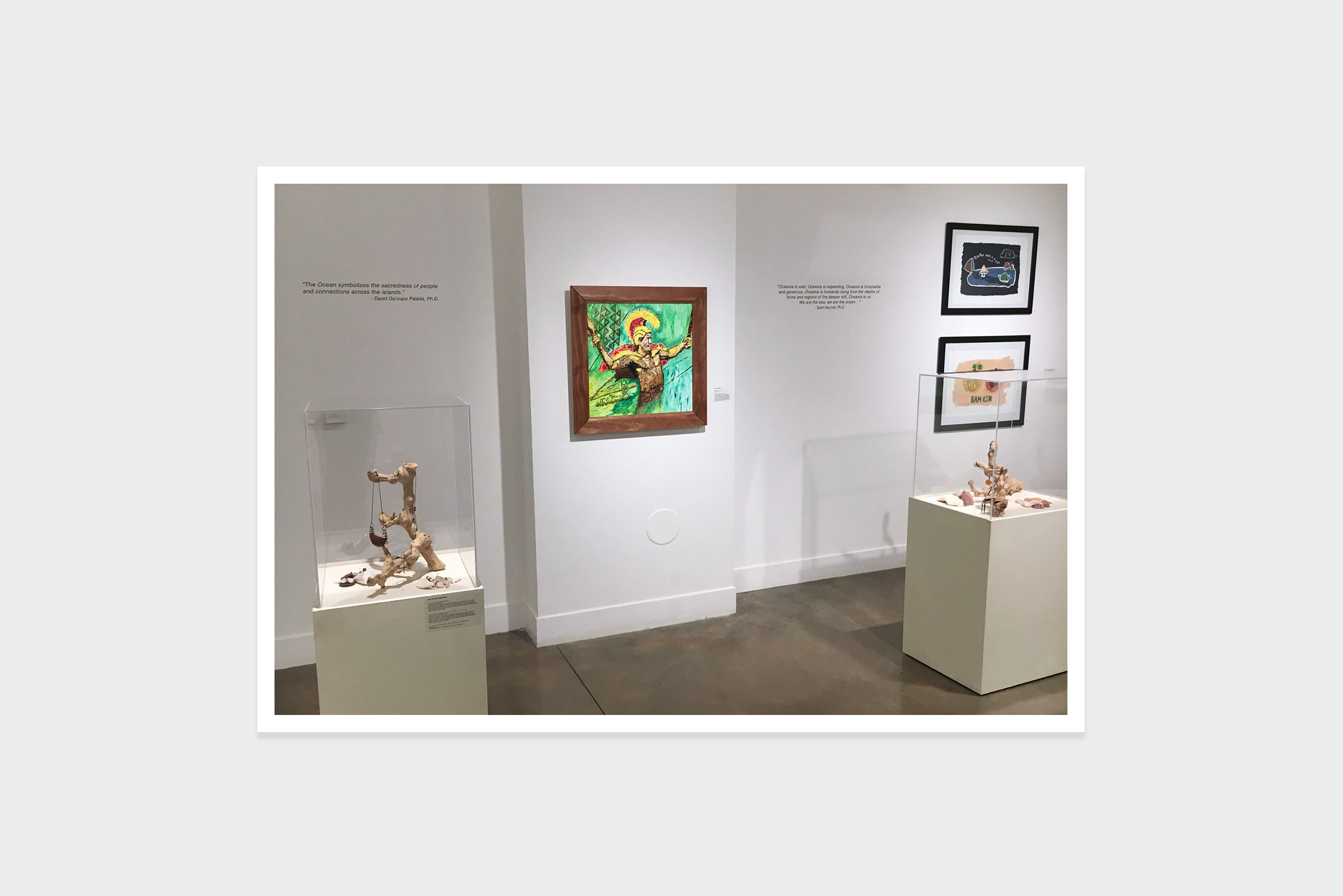
Being Pacific
Services: Curation, Writing, Exhibit Layout, Project Management, and Design.
Being Pacific contextualizes the cultural vigor and historical narratives of artists and their experiences originating from the Pacific Islands. With a strong foundation in empowerment, the lens is placed on the truth of community relationships and their starting points. Examining an array of works that dialogue emotional conflicts, tradition, practices, colonialism, and their verity, Being Pacific is merely a small fragment of the Oceania’s diary, but carries the load of what it really means to identify as Pacific Islander.
The lack of representation and institutional racism has perpetuated inaccuracies in Pacific Islanders’ history. In fact, API is a designated term which aggregates the massive history of Pacific Islanders’ with those whom identify as Asian. Incidentally, there is not nearly enough coursework within API educational programs that sufficiently represent the history of PI’s. There is an active need for academic platforms where students of color are able to take courses that dive deep into their factual histories, but due to America’s imperfect educational system, students of a rich cultural background like the Pacific Islander community, are being systematically marginalized from higher learning programs. People have the right to retain their own national identity. Compartmentalizing such an immense Oceanic ancestry would mean pushing the agenda of erasing several islands culturally rich in tradition and history.
Being Pacific vocalizes largely on actual experiences and narratives of Pacific Islander artists rather than trying to collectively and artificially historicize what museum-type institutions tend to label as “Pacific Islander art.” Calling living tradition and culture as “art” is rather a misnomer. Historically, Europeans have been known to collect items from “exotic” lands and categorize the Pacific Islands living works as “objects” rather than “art,” or even “history.” Understand that traditional materials of culture and history were made to be passed down between family and villages; to stay within the community; not to be set in museums as part of a “collection.” Stemming from this dim curiosity; stereotypes, cultural appropriation, and misrepresentation of many cultures have grown exponentially including those of Pacific Islander descent. The “fascination” of indigenous culture is a cringing situation since it is conditioned by western and colonial constructs. Many tourists see an ideal vacation destination rather than understanding what is respected and sacred land.
“People should be responsible to learn” – David G. Palaita, Ph.D.
“We should not be defined by the smallness of our islands, but by the greatness of our oceans. We are the sea, we are the ocean. Oceania is us. We must wake up to this ancient truth and together use it to overturn all hegemonic views that aim ultimately to confine us again, physically and psychologically. It is time to create things for ourselves, to create established standards, or excellence that matches those of our ancestors.” -Dr. ‘Epeli Hau’ofa, Tongan Novelist & Anthropologist






